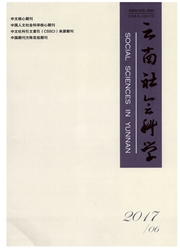

 中文摘要:
中文摘要:
清水江流域清代民国时期在大家族所有制下,家庭所分得的份地可能只是维护其基本生活的一部分经济来源。单靠份地种植杉木,不仅地块有限,要经过二三十年的时间才有收益,这么长一段时间靠什么生活?一般家庭不能仅仅靠种杉维持长期的生活。大家族公地中其他经济林,如桐子树、油茶树、五倍子树、漆树等经济树木所产桐油、茶油等经济作物是家庭日常生活的重要经济来源。油茶是该地主要经济作物,“清水江文书”中油山买卖、租种契约说明茶油在人们生计中的作用。也就是说个体家庭经济不能完全从大家族中独立出来,还要靠在家族其他经济林中所占有的股份中提取生活来源。那么,这些大家族公地中作为经济林的油茶的收益是怎样按照股份由各房族领有,又以何种形式投入劳动力,如何按股份标准进行收益的分配,这可能是解决大家族公有制下林地占有和分配制度的关键。
 英文摘要:
英文摘要:
During the Republic of China, the private ownership of land and forestry in Qingshuijiang river basins might only a small part of economic resources which maintained the basic necessities of a family. Planting fir was far from enough for supporting a family. Other cash crops produced from eco- nomic forest in commons such as Tung - oil tree, camellia, and lacquer trees consisted of the main family economic resource of the daily life of a family. Camellia was the major cash crop, oil trading and tent contract in Qingshuijiang Documents proved this. That is, individual family economy cannot be completely separated from the “big family”. Hence, distribution methods and standard were the key issues of solution to distribution system in the “big family”.
 同期刊论文项目
同期刊论文项目
 同项目期刊论文
同项目期刊论文
 期刊信息
期刊信息
